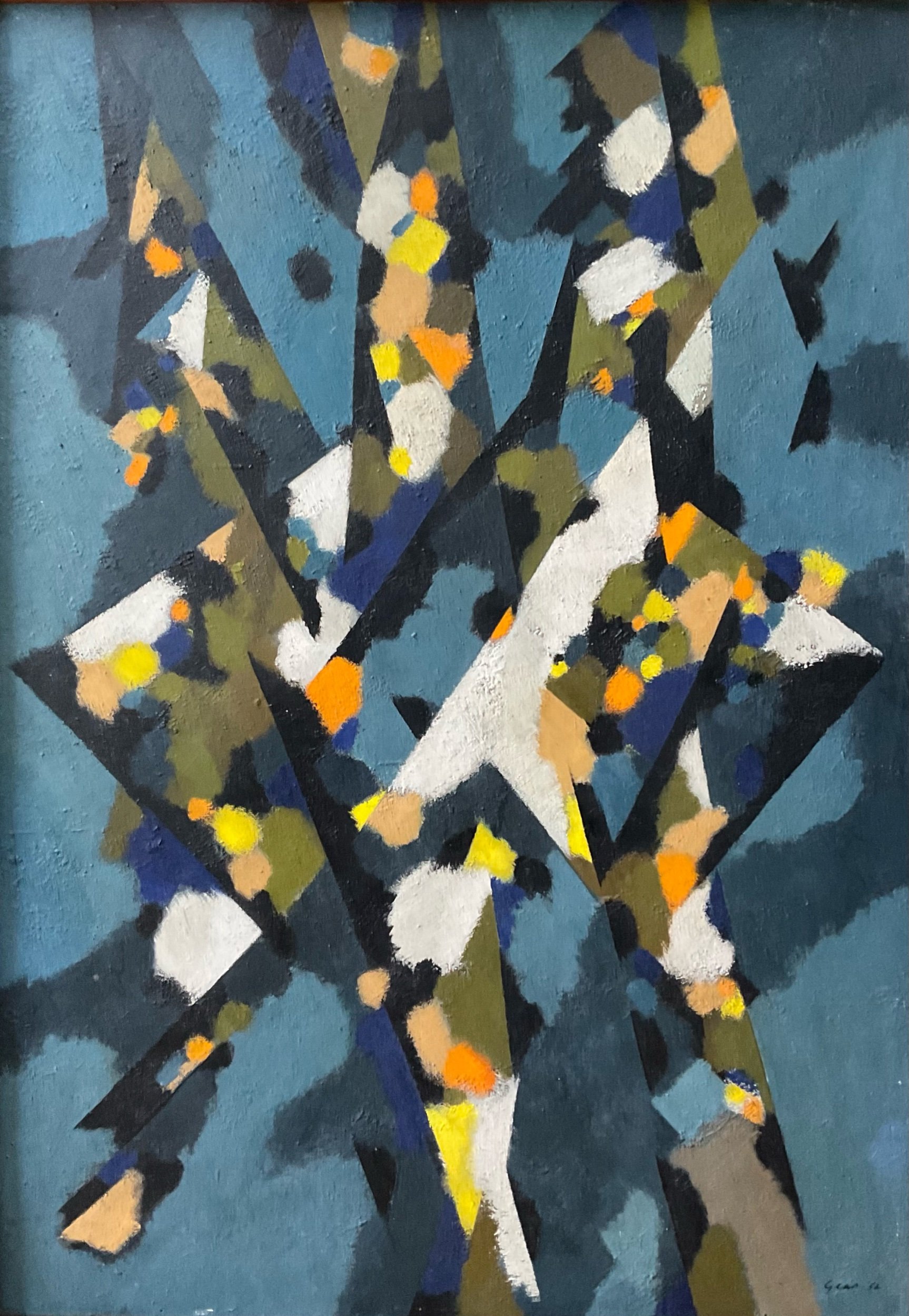William Gear
William Gear was born into a mining family in Scotland , studied together with Wilhelmina Barns-Graham and Margaret Mellis at Edinburgh College of Art in the 1930’s before travelling to Paris to work with Fernand Leger . He also attended a summer school with ‘The Two Roberts’ so really was at the heart of the Modern Scottish Art movement of the pre war years .
He was called up for military service serving in the Middle and Far East where he met the artist Merlyn Evans and at the end of the war became one of ‘The Monument Men’ being signed up to the Allied Forces’ Monuments, Fine Arts and Archives (MFAA) section, during and immediately after the war. The group of approximately 400 service members and civilians worked with military forces to safeguard historic and cultural monuments from war damage, and as the conflict came to a close, to find and return works of art and other items of cultural importance that had been stolen by the Nazis or hidden for safekeeping. Some of them are portrayed and honored in the 2014 film The monuments men .
Post war Gear became heavily involved in the Cobra group and was one of just two British artists accepted into the group. Gear was invited by Constant and Jorn to exhibit at CoBrA shows in Amsterdam and Copenhagen in 1949, alongside Corneille and Appel. In the same year, he exhibited alongside Jackson Pollock at Betty Parson’s Gallery in New York. So lets be honest at this point Gear has some of the very best credentials in the Modern British and Avant Garde Art groups of the post war world.
The 1950’s
Gear moved back to the UK from Paris in 1950 . He was living with his young family in Loosley Row near Princess Risborough , Bucks and said about his work
‘There was always a link with nature, I never denied nature really. Even in those extreme abstract themes we have been looking at, there is an equivalence to, observable form.
I don’t say nature in the naturalistic sense but of observable forms. They may be telegraph poles or stakes or trees or structures or, as I am looking out the window now, I mean, I can see, I can see my painting in two or three different ways.
There is the severe architectural modern structure over there and at the same time trees and foliage and blossom and light through the tree. I mean, there is my painting you see. This is where it comes from. I don’t necessarily sit down and paint that, but I am aware of it.’
We only have to look at the titles of his works from this period to see that they are deeply rooted in nature and the seasons much like the work of Alan Reynolds from the same time. Summer Morning is currently available here at Blondes Fine Art in Hertfordshire, so do get in touch if you would like to view the work.
Link to full blog about this work below
https://mark-ponting-w1fh.squarespace.com/blondes-blog/2021/11/27/williamgear
